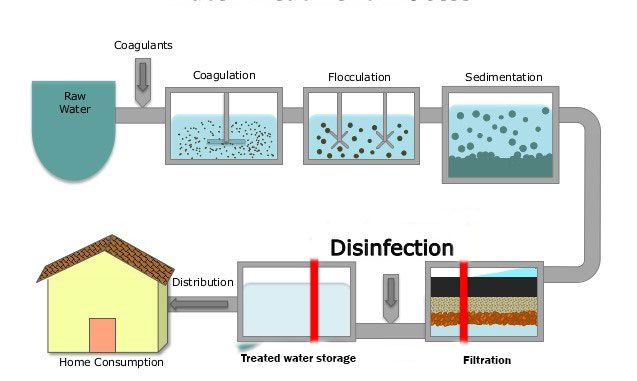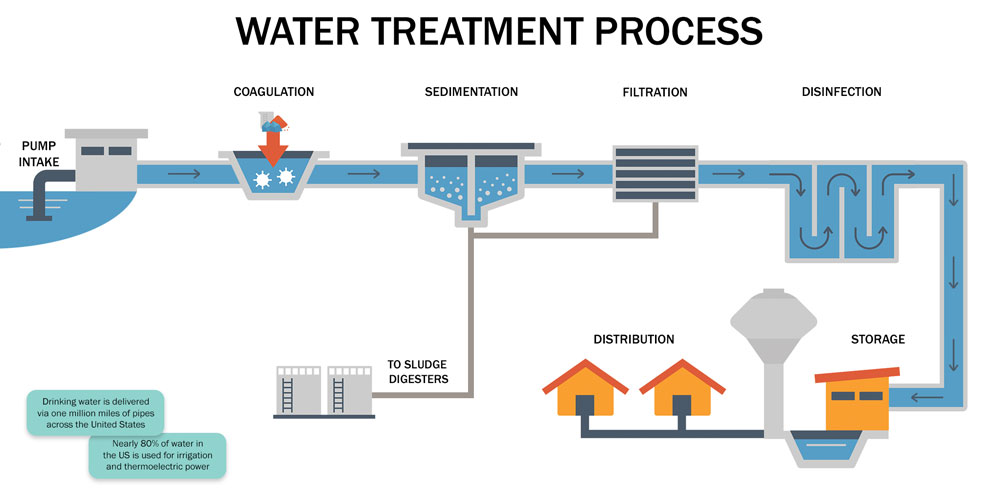Hard Water Treatment Systems Fundamentals Explained
Table of ContentsThe smart Trick of Hard Water Treatment Systems That Nobody is Talking AboutThe smart Trick of Hard Water Treatment Systems That Nobody is DiscussingHard Water Treatment Systems Can Be Fun For EveryoneSome Of Hard Water Treatment Systems9 Easy Facts About Hard Water Treatment Systems ShownThe smart Trick of Hard Water Treatment Systems That Nobody is Talking About
In this blog site, we will cover the four types of water treatment plants, exactly how they function as well as the numerous commercial applications of each type. Wastewater Treatment Plant (WWTP) Wastewater is the water that stems from water made use of in domestic, farming, industrial as well as clinical or transportation activities.on the other hand, originates from manufacturing, commercial and industrial tasks lugged and has an entirely various structure than sewer water. Just how does it function? The initial step in this water therapy plant is that the wastewater drains to the plant with the assistance of gravity through the main drain system.
In this stage, the water relocates with the gravel chamber to eliminate any kind of grit. The gravel is then taken care of at the dump. The water after that relocates to bench screens which get rid of huge items. These are training course displays. Next, the fine screens get rid of smaller things such as undigested foods, or suits, and so on.
The 25-Second Trick For Hard Water Treatment Systems



This enables the separation of water from the semi-solid sludge, whereas the staying sludge goes through the mechanical procedure again for dewatering, that is obtaining as much water from the sludge as feasible. The sludge after that left after the digestion and dewatering process is complete, is finally disposed of in the dump.
The Single Strategy To Use For Hard Water Treatment Systems
The last step in wastewater treatment is examination. hard water treatment systems. This evaluation involves examining the contamination level of the water dealt with and also ensuring it follows the greatest criteria in order to be released or recycled for domestic or industrial purposes. Applications: A lot of petroleum refineries or petrochemical as well as chemical sectors produce a big quantity of wastewater and also require on-site wastewater therapy plants.
The wastewater below flows through displays and also into negotiation basins that can get particles in large quantities. It functions as a pre-treatment as mentioned above as it takes area before 3 even more hostile phases- main, additional as well as tertiary therapy. Key Treatment During this phase, the wastewater moves into the clarifiers.
It is the style of these tanks that cause clearing up, that is, the natural strong matter accumulates at the end of the container while the lighter matter floats to the leading ending up being simpler for removal. The raw material that clears up at the base is called a sites primary sludge blanket.
The Ultimate Guide To Hard Water Treatment Systems
Additional Treatment This therapy phase consists of cardio oygenation. When this air streams through the aerators, the tiny openings existing, turn them into bubbles as well as they get blended with the water column.
This RAS goes back into the main explanation container and the microorganisms in it aids in damaging down any natural issue in the sewage. Once RAS has actually totally experienced both the primary and additional information containers continually, i. e numerous times, it is become waste-activated sludge (WAS). The WAS then does not go back to the primary clarification container but rather relocates to the covered storage tanks, likewise called cardiovascular sludge digesters.
Lastly, the remaining sludge transfer to the dewatering facility which contains dewatering storage tanks where the plant uses belt presses to squeeze any continuing to be water out of the sludge (hard water treatment systems). Tertiary Therapy Tertiary therapy adheres to the procedure of both primary as well as additional procedures but additionally additionally includes mechanical and also photochemical procedures.
Little Known Facts About Hard Water Treatment Systems.
Here the focus is offered to physical techniques such as testing, sedimentation, filtration, clarification etc. The objective of this is to remove as much strong physical issues as possible before sending out the effluent for further treatment. This stage involves the removal of strong waste and raw material. Here chemicals are contributed to damage down any kind of solid as well as chemical waste.
There are 2 kinds of resins- one this content is an anion one while the various other is a cation one. hard water treatment systems. These previous resins release hydroxyl ions which are adversely charged while the cation materials release hydrogen ions that are positively billed. The cation-exchange materials lead to conditioning of water, the anion-exchange lead to the elimination of nitrate from wastewater and the combination moved here of both the anion and also cation exchange gets rid of basically every ionic impurity existing in the feed water with a process called deionization.
Applications: Demineralization brings about the complete elimination of minerals from the water and is generally utilized in industries that call for water with high levels of purity, as an example- make-up or feed water in high-pressure central heating boilers, the food and beverage sector, and also procedure streams used in the manufacturing of electronic devices. They are likewise utilized in industries for the generation of heavy steam, power and cooling.
Getting The Hard Water Treatment Systems To Work
Reverse Osmosis (RO) Water Treatment The principle of reverse osmosis (RO) functions on the filtering method that results in the elimination of a large number of impurities as well as contaminations from wastewater by applying stress to it when it is on one side of a membrane. Just how does it work? This water therapy plant functions by using a high-pressure pump that boosts the pressure on the salt side of the RO as well as forces the water across the semipermeable RO membrane (which permits some atoms and also particles to pass but not others), leaving nearly 95%-99% of liquified salts in the reject stream.